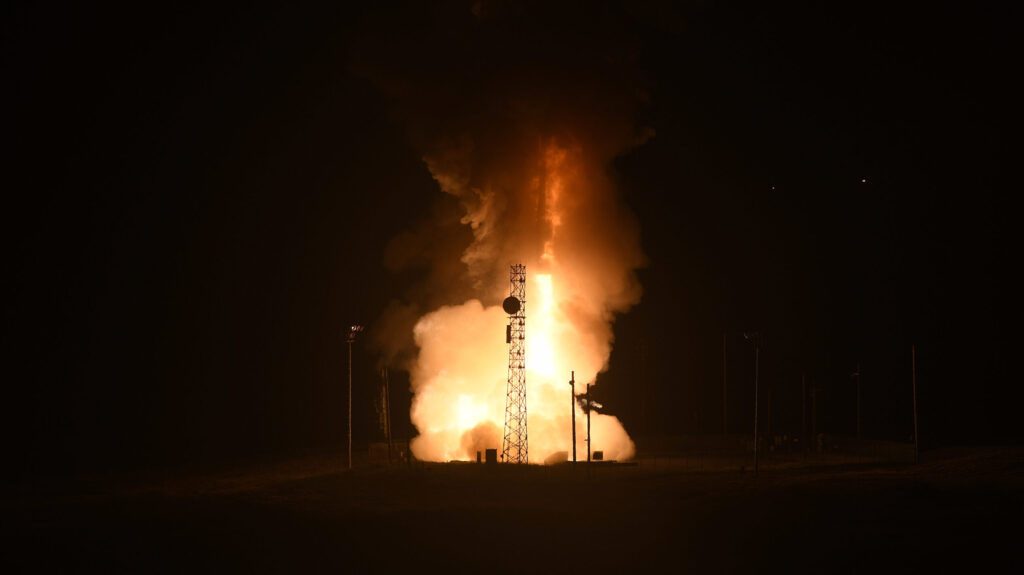
An unarmed Minuteman III intercontinental ballistic missile launches during an operational test May 1, 2019, at Vandenberg Air Force Base, Calif. (US Air Force photo by Staff Sgt. Brittany E. N. Murphy)
WASHINGTON — The Space Development Agency (SDA) is seeking industry assistance in crafting a project to test whether space-based sensors can be used to gather data from US ballistic and hypersonic missiles tests — cutting the costs to the Defense Department by millions of dollars, according to a senior SDA official.
Currently, DoD uses ships and aircraft to collect telemetry, GPS signals and other data from test missiles after launch to study their performance, and in the case of a malfunction that might cause harm, be able to destroy them. This not only limits when and where testing can be done based on availability of those platforms, but also means each test is costly.
“That is a very, very expensive process,” the official told Breaking Defense Thursday.
SDA believes that by instead basing those sensors on satellites, data could be collected anytime, anywhere, and at much lower costs.
“Then, all of a sudden you could save the United States, literally, millions of dollars per test,” the official said, noting that SDA already has a lot of interest from the Army and DoD’s testing community in the effort, called Space-Based Telemetry Monitoring, Electronic Support, and Alternative Navigation (SABRE).
Thus, SDA is asking industry to comment by Jan. 30 on its initial plan for the experimental program, hoping to discover what the state of the art is and what vendors think is doable over the next couple of years. The draft solicitation, issued Jan. 6, proposes development of four sensor payloads to be flown on SDA’s small experimental testbed satellites called NExT, a nested acronym for National Defense Space Architecture Experimental Testbed.
SDA in October granted Ball Aerospace an Other Transaction prototype agreement, with a total potential value of approximately $176 million for development and operation 10 NExt satellites ground systems, with a first launch set for 2024.
In addition, the agency is interested to see if the SABRE payloads might also be configured to serve as an alternate network to GPS for positioning, navigation and timing (PNT) — something the services and combatant commands are keenly interested in due to concerns about GPS jamming by adversaries.
SDA’s NeXT testbed is experimenting with what is often called “alternate PNT” capability, and the agency further is eyeing hosting payloads on its Tranche 2 batch of Transport Layer data relay satellites set for launch in 2026.
“While we’re acquiring the SABRE capability, we have had conversations with industry, and it looks like there’s some commonality between what SABRE needs to do from a communication path perspective for systems under test … and an alternate PNT capability, in that depending on the software defined radio, the antenna etc., you might be able to get all of that in one package,” the official said. “Anyway, we’re trying to find out from industry if this is something that we can truly pursue.”
Army eyes TBI monitoring, wearable tech for soldiers in high-risk billets
“We are also looking at what additional personal protective equipment we can provide to our folks, especially instructors and others who are routinely exposed to blast pressure,” said Army Secretary Christine Wormuth.


























